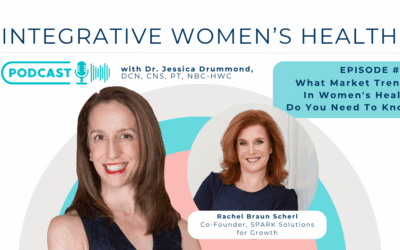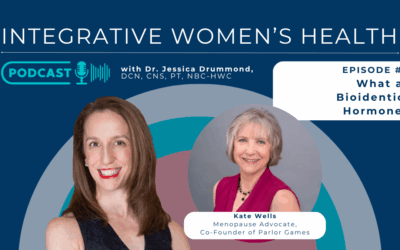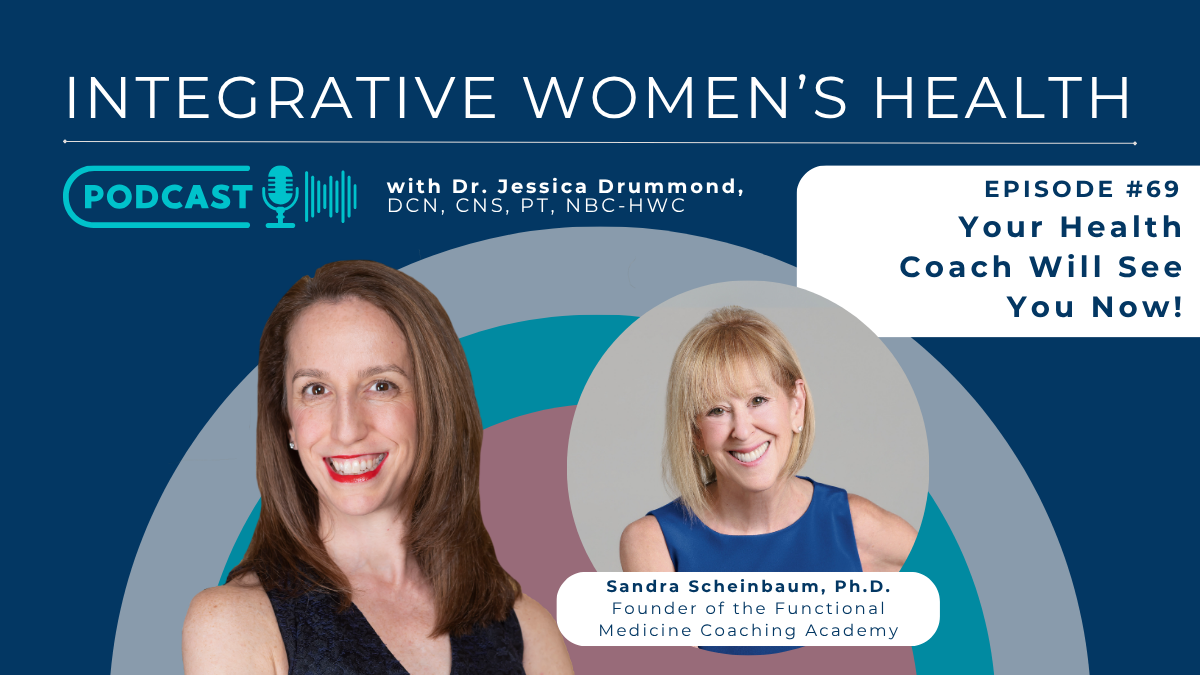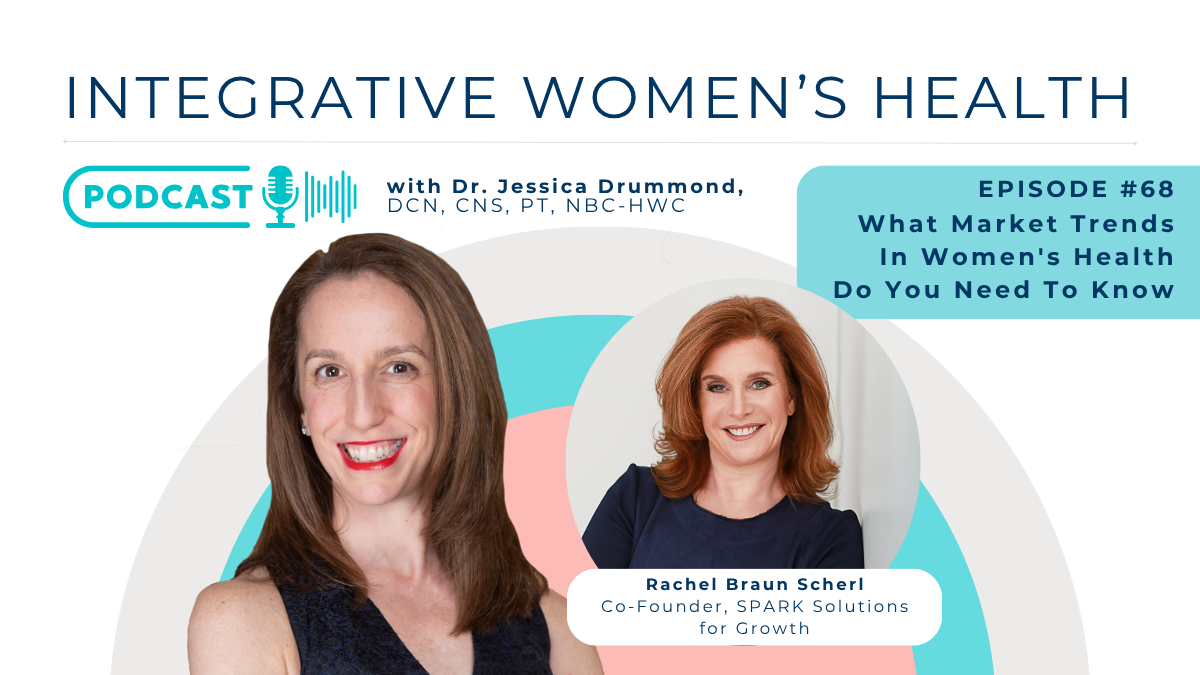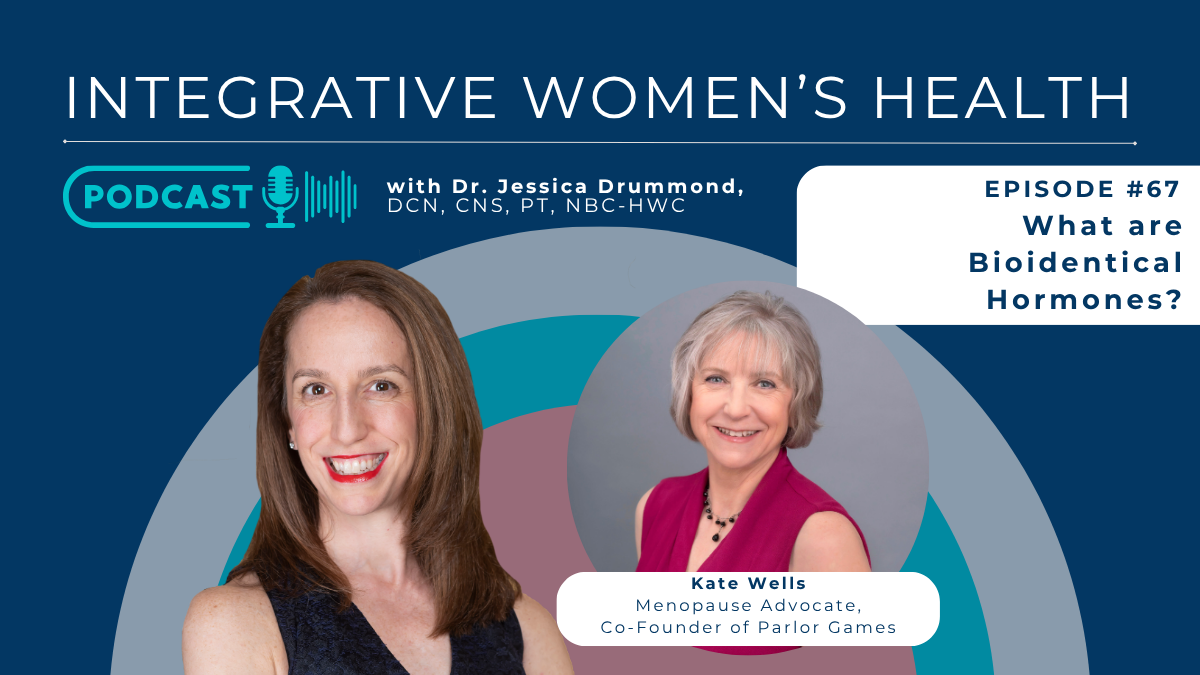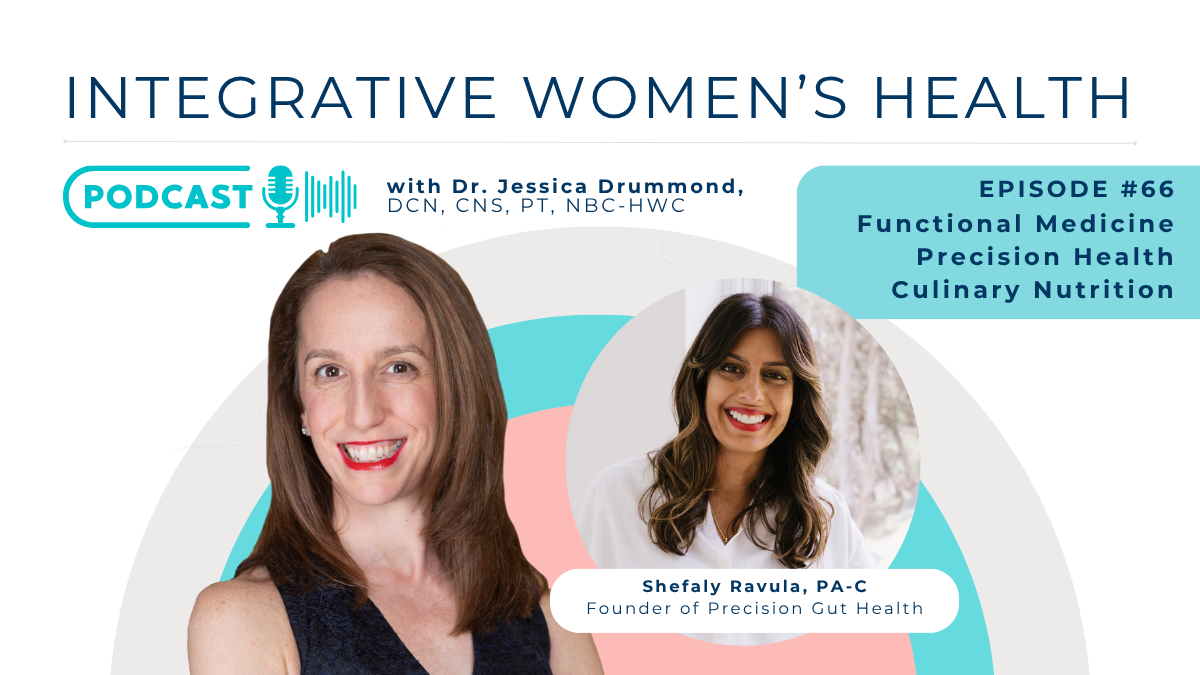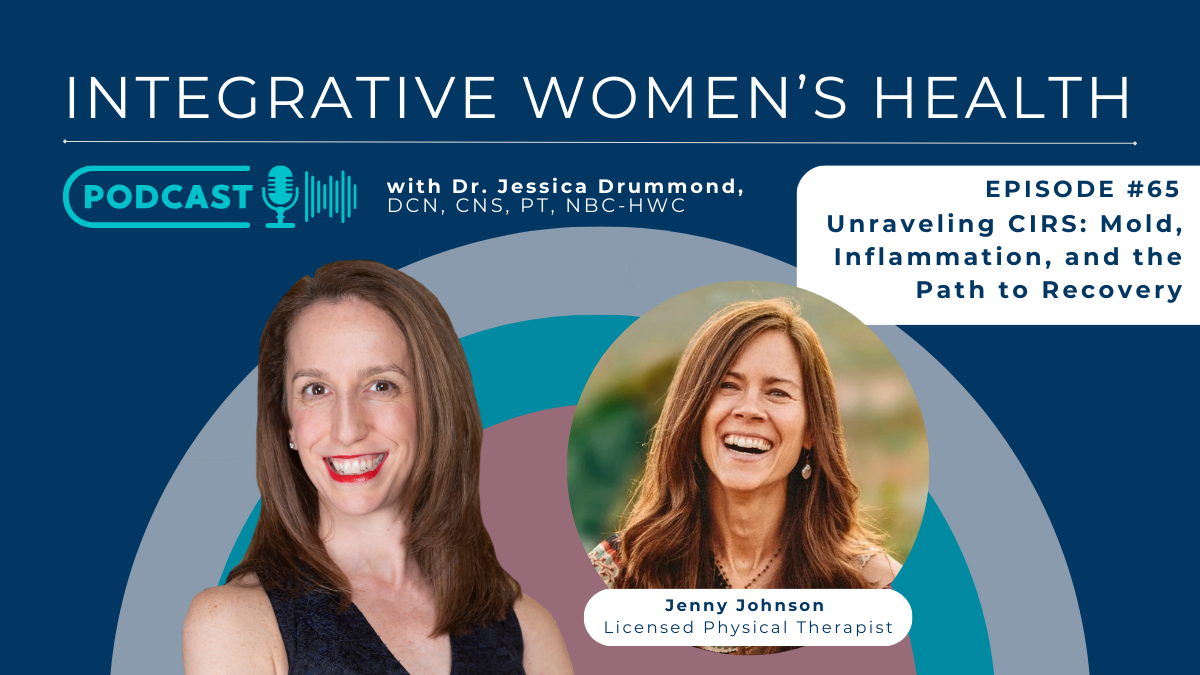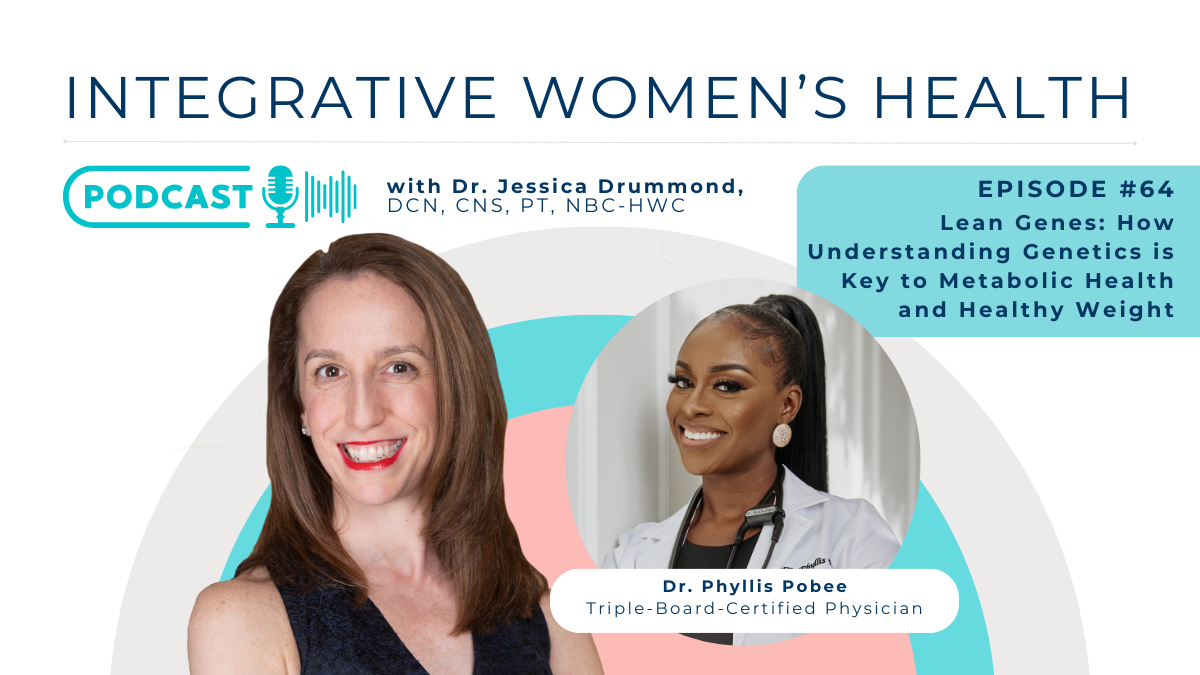If you’re confused about the difference between two common gynecological conditions: endometriosis and adenomyosis, you’re in the right place.
And, don’t worry… patients and practitioners alike are frequently confused about both of these conditions and the differences between them.
While both endometriosis and adenomyosis affect the uterus and can cause similar symptoms, they are actually quite different and require different treatment approaches.
In this blog post, I will provide an overview of each condition and discuss the latest research on their diagnosis and treatment.

First, let’s define each condition.
Endometriosis is a condition in which tissue similar to the lining of the uterus (the endometrium) grows outside of the uterus, often on the ovaries, fallopian tubes, or other organs in the pelvis.
This displaced tissue will often thicken, break down, and even bleed with each menstrual cycle, in addition to contributing to both local and systemic inflammation and adhesions.
People with endometriosis struggle with chronic inflammation, scarring, and the formation of adhesions on abdominopelvic organs, and even organs and tissues far from the uterus, such as on the lungs, diaphragm, and even in joints, including the knees.
These endometriosis lesions and the systemic disease process of endometriosis can cause symptoms such as:
- chronic pain
- chronic fatigue
- fertility problems for people of reproductive age
- painful, heavy periods
- menstrual cycle irregularities
- anxiety
- depression
- breathing issues
- digestive problems
- bladder issues
- and more
Adenomyosis, on the other hand, is a condition in which the endometrial tissue grows within the muscular wall of the uterus, causing it to thicken and become swollen.
Unlike endometriosis, adenomyosis does not typically involve the growth of tissue outside of the uterus. However, it can cause similar symptoms, such as heavy menstrual bleeding, pelvic pain, intense period pain, painful intercourse, fatigue, fertility issues, anxiety, depression, and more.
So, how can these two conditions be distinguished from one another?
Unfortunately, there is no single diagnostic test that can definitively diagnose either endometriosis or adenomyosis.
Instead, a combination of medical history, physical examination, imaging tests, and biopsy is often used to make a diagnosis.
One recent study found that transvaginal ultrasonography, combined with serum CA-125 testing, had a sensitivity of 82% and a specificity of 88% for the diagnosis of endometriosis (1).
However, this approach is not specific for adenomyosis, and other imaging techniques, such as magnetic resonance imaging (MRI), might be more useful for detecting and diagnosing adenomyosis (2).
Ultimately the only way to truly diagnose endometriosis is via skilled laparoscopic excision surgery (3).
And, the only way to diagnose adenomyosis definitively is via hysterectomy (4).
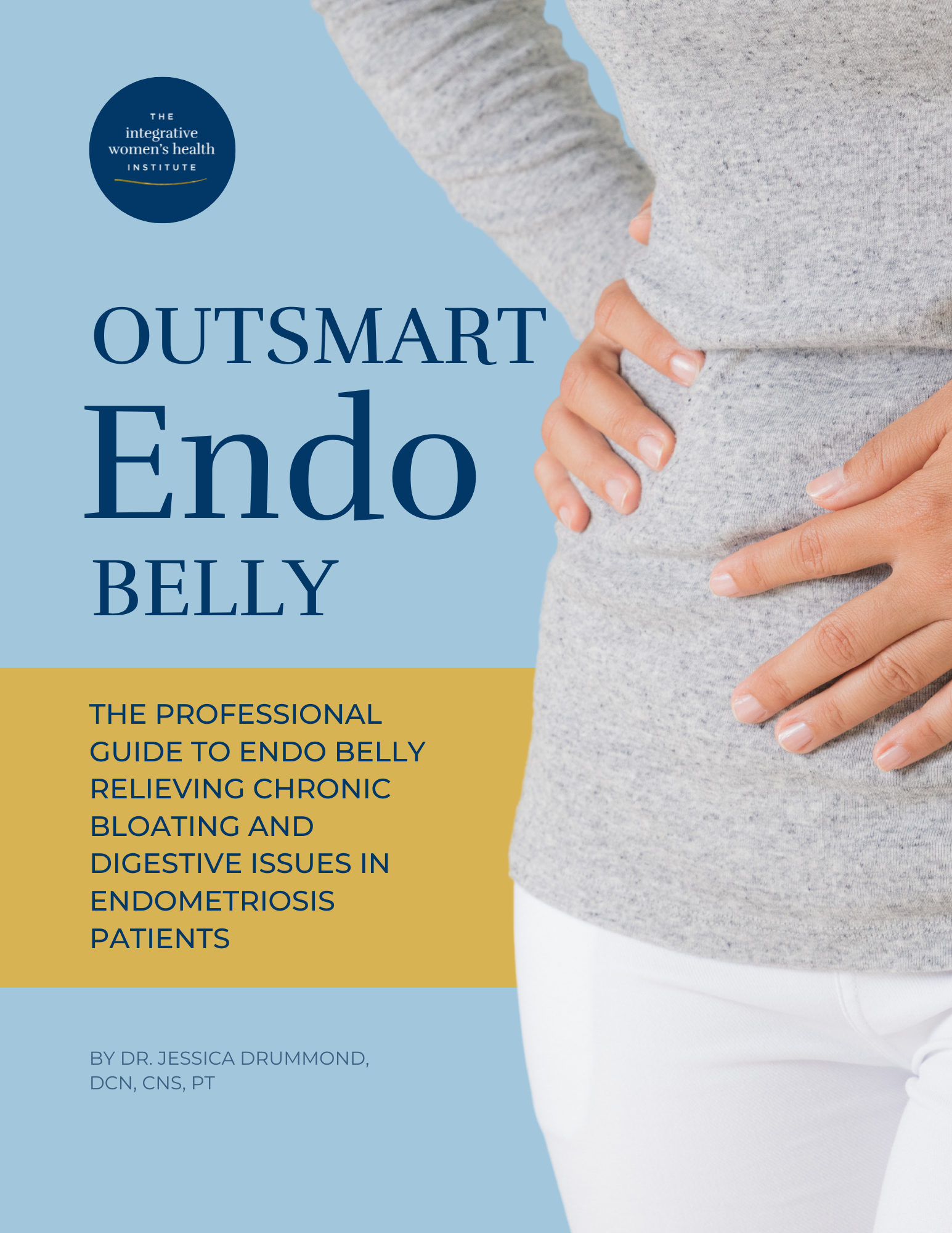
Download your free copy of the Outsmart Endo Belly eBook!
The Professional Guide to Relieving Chronic Bloating, Pain, and Digestive Issues in People with Endometriosis
Adenomyosis and Endometriosis Treatment Options
Once a diagnosis has been made, the appropriate treatment options can be determined.
While the mainstay of treatment recommended by conventional gynecologists for both endometriosis and adenomyosis is hormone therapy, including oral contraceptives, progestins, or gonadotropin-releasing hormone (GnRH) agonists (5,6), these therapies only (at best) provide symptomatic relief and do not halt the progression of the disease states.
Minimally invasive laparoscopic surgery is the preferred approach for endometriosis, while open surgery is the preferred approach for adenomyosis (7).
I strongly recommend consulting with a specialist physician with regards to surgery for endometriosis or adenomyosis as both procedures can be highly complex, including the need for addressing potential lesions on the diaphragm, lungs, digestive tract, or other organs, as the extensive nature of each case can not be fully elucidated prior to surgery with imaging or testing.
In addition to medical treatments, there are several non-medical therapies that can help manage the symptoms of endometriosis and adenomyosis.
These include lifestyle modifications such as nutrition and exercise, as well as complementary and alternative therapies such as acupuncture, and yoga.
- For example, a systematic review of acupuncture for endometriosis found that it can reduce pain and improve the quality of life in people with the condition (8).
- Similarly, a study of yoga for adenomyosis found that it can reduce the intensity of pelvic pain and improve psychological well-being (9).
Ideally, patients will be supported to use a comprehensive holistic approach to overall health prior to surgery (for at least 3-6 months, unless the situation calls for more urgent surgical intervention), and for 6-24 months post-surgically. Or, for 6 months to 2 years if surgery is not indicated, or the patient prefers to manage their condition without surgery.
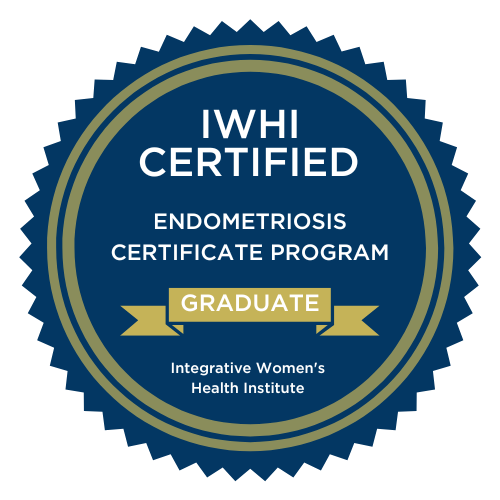
BECOME AN ENDOMETRIOSIS EXPERT IN 3 MONTHS!
Discover how to provide your clients with the specialized care and support to help them address their endometriosis symptoms while also growing your own practice and niche skillset.
This 3-month Certificate Program starts as soon as you enroll!
In addition to using lifestyle modifications to regulate the nervous system and optimize neuroendocrine function, the other key physiologic systems must also be addressed for a holistic approach to health optimization for people with endometriosis to be their healthiest possible selves and have the best possible long-term surgical outcomes.
- Digestive system function and gut microbiome optimization
- Adding nutrient-dense, anti-inflammatory foods, herbs, and nutrient supplements
- Immune system regulation
- Mitochondrial function to support energy for healing and life
- Musculoskeletal health, including pelvic floor physical therapy. (14, 15)
- Community support, and lifestyle medicine (including mindfulness strategies) to regulate the nervous system using happiness, joy, pleasure, and other sensations of safety, calm, and social engagement. (16, 17)
In conclusion, endometriosis and adenomyosis are two common gynecological conditions that can cause similar symptoms but require different and overlapping diagnostic and treatment approaches.
Diagnosis may involve a combination of medical history, physical examination, imaging tests, biopsy, and surgery to remove the affected tissue.
In both cases, taking a comprehensive, integrative and holistic approach to whole-body healing is essential for the optimal management of these complex conditions that affect the health of the whole body, not just the reproductive organs, which is commonly misunderstood by patients and practitioners alike.
Interested in learning more about endometriosis? Check out The Endometriosis Certificate Program, a 3-month fast track professional training program to become an endometriosis expert.
Read More Endometriosis-Related Posts:
References
- Kim, E. Y., Jung, H. Y., & Kim, K. J. (2018). Transvaginal Ultrasonography and Serum CA-125 Testing for the Diagnosis of Endometriosis: A Meta-Analysis. Journal of Ultrasound in Medicine, 37(6), 1421–1430. https://doi.org/10.1002/jum.14383
- Abed, H. A., & Salih, D. S. (2020). Magnetic Resonance Imaging in the Diagnosis of Adenomyosis: A Systematic Review and Meta-Analysis. Frontiers in Endocrinology, 11, 496. https://doi.org/10.3389/fendo.2020.00496
- American College of Obstetricians and Gynecologists. Endometriosis: Diagnosis and Treatment. July 2017. https://www.acog.org/Patients/FAQs/Endometriosis-Diagnosis-and-Treatment#surg. Accessed June 1, 2020.
- Mayo Clinic. (2020). Endometriosis: Treatment. Retrieved from https://www.mayoclinic.org/diseases-conditions/endometriosis/diagnosis-treatment/drc-20354752
- American College of Obstetricians and Gynecologists. Adenomyosis. April 2018. https://www.acog.org/Clinical/Clinical-Guidance/Committee-Opinion/Articles/2018/04/Adenomyosis. Accessed June 1, 2020.
- Mayo Clinic. (2020). Adenomyosis: Treatment. Retrieved from https://www.mayoclinic.org/diseases-conditions/adenomyosis/diagnosis-treatment/drc-20354380
- American College of Obstetricians and Gynecologists. (2018). ACOG Practice Bulletin No. 186: Endometriosis. Retrieved from https://www.acog.org/clinical/clinical-guidance/practice-bulletin/articles/2018/01/endometriosis
- Liu, J., Wang, L., & Chen, S. (2018). Acupuncture for endometriosis: A systematic review and meta-analysis. BMC Complementary and Alternative Medicine, 18(1), 87. https://doi.org/10.1186/s12906-018-2189-6
- Wang, C., & Zhou, X. (2016). Yoga for adenomyosis: A randomized controlled trial. Medicine, 95(40), e5242. https://doi.org
- Pinto, L., Vallejo, M. C., & Abrao, M. S. (2004). The psychological impact of endometriosis. Psychosomatic Medicine, 66(6), 837–843.
- Clements, S., Brown, J., & Farquhar, C. (2005). Quality of life and psychological well-being in women with endometriosis. Fertility and Sterility, 84(5), 1433–1438.
- Nappi, R. E., Affinito, P., Bellini, M., & Zupi, E. (2005). Quality of life, functioning, and psychological well-being in women with endometriosis. Psychosomatic Medicine, 67(5), 844–849.
- Kuo, M. H., Su, L. M., Lai, Y. C., & Yang, Y. C. (2011). Neuroendocrinological mechanisms in endometriosis. Journal of the Formosan Medical Association, 110(2), 92-97.
- Manganaro V, Marchese C, Di Naro E, et al. Pelvic floor physical therapy in women with endometriosis: A systematic review and meta-analysis. Reprod Sci. 2020;27(2):197-207. doi:10.1007/s43032-019-00115-2
- Rosas Gomez D, Pacheco-Carrillo MA, Pacheco-Romero R. The effectiveness of pelvic floor physical therapy in women with endometriosis: A case series. Phys Ther Sport. 2019;37:42-45. doi:10.1016/j.ptsp.2019.02.007
- Pinto-Gouveia J, Monteiro C, Pinto A, et al. Mindfulness and relaxation techniques to relieve stress and anxiety in women with endometriosis: a systematic review. Eur J Integr Med. 2017;9(8):723-733.
- Ferreira CH, Carvalho L, Oliveira M, et al. Sensations of safety, happiness and social engagement improve symptoms of endometriosis: a cross-sectional study. Gynecol Obstet Invest. 2018;83(4):305-314.

Founder & CEO
Dr. Jessica Drummond,
DCN, CNS, PT, NBC-HWC
Dr. Jessica Drummond, DCN, CNS, PT, NBC-HWC, is the founder and CEO of The Integrative Women’s Health Institute, The Outsmart Endo Health Coaching Program, and the creator of the Women’s Health Coach Certification.
She is passionate about caring for and empowering people who struggle with women’s and pelvic health concerns. She is equally passionate about educating and supporting clinicians and wellness professionals in confidently and safely using integrative tools to transform women’s and pelvic healthcare.
Dr. Drummond has two decades of clinical experience as a licensed physical therapist, licensed clinical nutritionist, and board certified health coach working with women with pelvic pain, including endometriosis, vulvodynia, and bladder pain syndrome. She brings a unique, conservative, and integrative approach to supporting women to overcome hormonal imbalances, and chronic pain conditions.
She is a sought after international speaker on topics such as integrative pelvic pain management, natural fertility options, optimal hormone health, menopause, and female athlete nutrition. Dr. Drummond was educated at the University of Virginia, Emory University, Duke Integrative Medicine, and Maryland University of Integrative Health.
Read Related Posts from The Integrative Women's Health Institute Blog:



